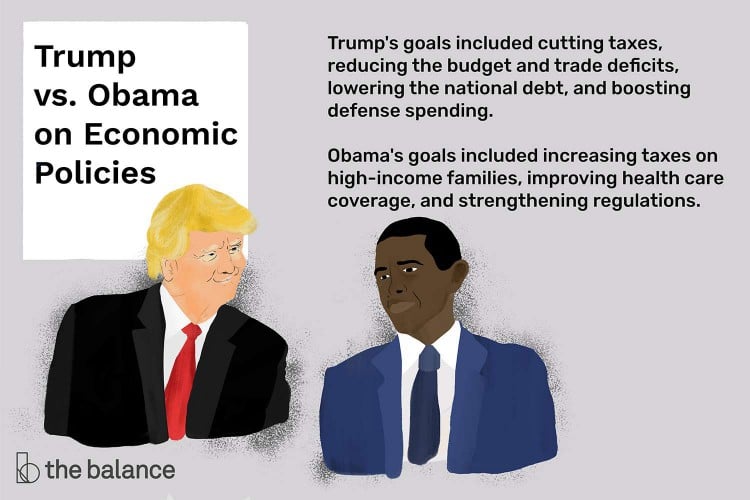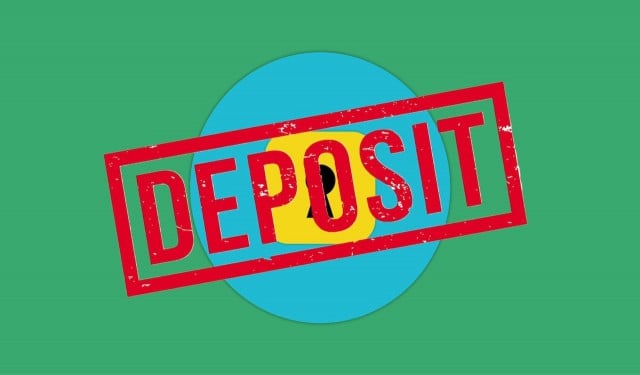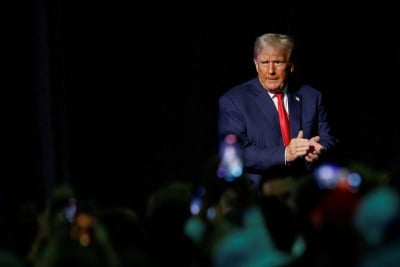
The Balance / Michela Buttignol
Donald J. Trump, a Republican, was the 45th U.S. president. His term was from 2017 to 2021. Like most Republican presidents, he promised to cut taxes, reduce the budget and trade deficits, lower the national debt, and boost defense spending.
Barack H. Obama, a Democrat, was the 44th president. His two terms were from 2009 to 2017. Like most Democratic presidents, he promised to increase taxes on high-income families, improve health care coverage, and strengthen regulations.
Here's a comparison of their policies in seven critical economic areas: defense, recession recovery, health care, trade, regulations, the national debt, and climate change.
Defense
Both presidents allocated more for defense than an administration since WWII. Trump budgeted $576 billion for the Department of Defense for Fiscal Year 2020. But the DoD budget is just one component of military spending. There is also emergency funding that's not subject to sequestration. Congress allocates that for overseas wars. Trump budgeted $174 billion, for a total of $750 billion for defense.
Military spending is also hidden in the Department of Energy’s National Nuclear Security Administration. The Department of Justice oversees the FBI. In addition, the Departments of Homeland Security and State support the national defense. When these are combined, FY 2020 military spending was $989 billion.
Obama eliminated Osama bin Laden, who was responsible for the 9/11 terrorist attacks. On May 1, 2011, Navy SEALs attacked the al-Qaida leader's compound in Pakistan. Later that year, Obama withdrew troops from the Iraq War. Three years later, renewed threats from the Islamic State group meant troops had to return.
The Sunni-Shiite split affects the U.S. economy with its ongoing contest over the Strait of Hormuz. Although a religious war, this Middle Eastern battle between Saudi Arabia and Iran is of global economic concern. It revolves around who gets control of the waterway through which 20% of the world’s supply of crude oil passes.
In 2014, Obama wound down the war in Afghanistan. Ending the wars in Iraq and Afghanistan should have reduced annual military spending. But it did not reduce it very much. At over $600 billion, military spending was the largest FY 2014 discretionary budget item. It was one of the leading causes of the budget deficit and national debt. The War on Terror costs has added over $2 trillion to the U.S. debt as of 2020.
Obama used a non-military tactic to reduce the threat of nuclear war with Iran. On July 14, 2015, Obama brokered a nuclear peace agreement with Iran. In return, the United Nations lifted the economic sanctions it imposed in 2010. Iran's economy improved greatly from the lifting of sanctions, an effect of signing the nuclear deal. But Trump pulled the United States out of that deal.
Obama also reduced the U.S. nuclear warhead stockpile; and this effort, in part, helped him win the 2009 Nobel Peace Prize "for his extraordinary efforts to strengthen international diplomacy and cooperation between peoples." Despite his "peaceful" reputation and actions, the Obama Administration actually spent more on defense than any other president preceding him. In FY 2010, his first budget, he spent $531 billion on the DoD. In FY 2011, he reached a peak of $708 billion in total military spending.
Recession and Recovery
Trump won the 2016 election by convincing voters that economic growth should be better. He promised a growth rate of more than 4%. His voters didn't realize that such fast growth is unsustainable and dangerous. It becomes a bubble that creates a recession. There are numerous examples of that boom and bust cycle.
In February 2020, the United States entered a recession. The economy contracted by 5% in the first quarter of 2020. Uncertainty over the pandemic’s impact caused the 2020 stock market crash in March. It launched a bear market, ending the longest expansion in U.S. history.
On March 13, 2020, Trump declared a national emergency in response to the COVID-19 pandemic. Americans were told to shelter in place. Schools were shut down and non-essential businesses were closed. This was done to keep people from spreading the virus and overwhelming hospitals.
The U.S. Congress passed the following acts:
- H.R. 6074 provided $8.3 billion to federal agencies to respond to the pandemic.
- H.R. 6201 provided $3.5 billion in paid sick leave, insurance coverage of coronavirus testing, and unemployment benefits.
- H.R. 748—Coronavirus Aid, Relief, and Economic Security Act (CARES Act). The $2 trillion aid package included stimulus checks to eligible taxpayers, expanded unemployment insurance, and aid to businesses and local governments.
- H.R. 266—Paycheck Protection Program and Health Care Enhancement Act allocated $483.4 billion for small businesses, hospitals, and testing.
In April 2020, the U.S. economy lost an astonishing 20.5 million jobs and the unemployment rate rose to 14.7%. That's after losing 881,000 jobs in March. U.S. retail sales plummeted by 12.66% in April 2020 from the month before (without adjusting for seasonal factors).
Obama faced the 2008-2009 recession. He used expansionary fiscal policy to combat it. He signed the American Recovery and Reinvestment Act. This act created jobs in education and infrastructure, ending the recession in the third quarter of 2009.
Obama bailed out the U.S. auto industry on March 30, 2009. The federal government took over General Motors and Chrysler, saving three million jobs.
Obama used the Troubled Asset Relief Program to create the Home Affordable Refinance Program. It rescued homeowners who were upside-down on their mortgages.
Health Care
Proponents of the Affordable Care Act argue that Trump's approach to health care focused on weakening the law. His administration stopped reimbursing insurers for their low-income customers. He raised premiums by 20%. He made short-term insurance more available. It's cheaper than Obamacare but doesn't have the same benefits. He also allowed states to enforce work requirements on Medicaid recipients.
Trump's supporters were frustrated with rising health care costs. They blamed Obamacare. Many of them had lost their employer-based insurance. Then they found that individual policies on the health care exchanges were more expensive.
Others thought it was unfair that they had to accept policies that covered maternity care as part of the 10 essential benefits. Policies were also more expensive because the ACA prohibited annual and lifetime limits. It mandated that insurers cover everyone, even those with pre-existing conditions.
The ACA legislation made changes to Medicare. One change was more coverage of prescription drug costs. It also began paying hospitals for quality of care, not for each test or procedure. Trump's health care plans did not try to reform these specific aspects of the ACA.
Congress wanted to repeal the ACA taxes. In 2013, the ACA levied taxes on those earning $200,000 or more. In 2014, anyone who didn't obtain health insurance also paid a tax.
The reason Obama pushed through the ACA in 2010 was to reduce health care costs. The cost of Medicare and Medicaid threatened to eat the budget alive. Health care costs are among the most common reasons for people to claim personal bankruptcy, even for those with insurance. Many policies at the time had annual and lifetime limits that were easily exceeded by chronic illness.
Most of the Act's benefits didn't go into effect until after 2014. Obamacare closed the Medicare “doughnut hole.” More importantly, the ACA provides health insurance for everyone. It slows the rise of national health care costs. It allows more people to afford preventive health care. They can treat their illnesses before they require expensive emergency room care.
In 2012, The Congressional Budget Office estimated the cost of Obamacare to be just under $1.1 trillion. Much of these costs went to expanding Medicaid and the Children’s Health Insurance Program to reach more low-income bracket earners.
Trade
Trump said he favored bilateral agreements and took issue with many multilateral agreements. Trump withdrew from the Trans-Pacific Partnership, which would have been the world's largest free trade agreement. He also renegotiated NAFTA under a new name—the U.S.-Mexico-Canada Agreement (USMCA).
The Obama administration negotiated the TPP before the Trump administration withdrew from it. The Obama administration also successfully concluded bilateral agreements in South Korea in 2010, Colombia in 2011, Panama in 2011, and Peru in 2009. The Obama administration began negotiations for the Transatlantic Trade and Investment Partnership, but it didn't finish negotiations, and the Trump administration didn't engage in further negotiations, so it effectively died.
Trump advocated trade protectionism. In 2018, he launched a global trade war with various tariffs. In January 2018, he imposed tariffs and quotas on imported Chinese solar panels and washing machines. In March 2018, he announced a 25% tariff on steel imports and a 10% tariff on aluminum. On July 6, Trump's tariffs went into effect for $34 billion of Chinese imports. On August 2, 2018, the administration announced a 25% tariff on $16 billion worth of Chinese goods. Though he rolled back some tariffs, Trump left office without conclusively ending the trade war, so the end result is still unclear. However, many economists predict that a prolonged trade dispute will end up hurting American businesses and consumers, and could even lead to an economic recession.
Trump also promised to label China as a currency manipulator. He attempted to use the label to pressure China to reduce its trade surplus with the United States. As president, he imposed tariffs without officially naming China a manipulator. The dollar to yuan conversion and history revealed that, if anything, China's currency is overvalued.
Regulations
Obama signed the Dodd-Frank Wall Street Reform Act in 2010. It regulated non-bank financial companies, like hedge funds, and complicated derivatives, like credit default swaps. It made another financial crisis less likely. Dodd-Frank also regulated credit, debit, and prepaid cards. It ended payday loans with the Consumer Financial Protection Bureau.
Trump would have liked to repeal Dodd-Frank completely. He claimed it keeps banks from lending more to small businesses. On May 22, 2018, Congress passed a rollback of some Dodd-Frank rules for these banks. The Economic Growth, Regulatory Relief, and Consumer Protection Act eased regulations on "small banks." These are banks with assets from $100 billion to $250 billion. They include American Express and Ally Financial.
The rollback means the Fed can't designate these banks as too big to fail. They no longer have to hold as much in assets to protect against a cash crunch. They also may not be subject to the Fed's "stress tests." In addition, these smaller banks no longer have to comply with the Volcker Rule.
Deficit and Debt
Both presidents ran up record-setting budget deficits. Obama's stimulus plan added $253 billion to President George W. Bush's last budget to create the largest deficit in U.S. history. The recession reduced revenue by almost $600 billion. As a result, the FY 2009 budget deficit was $1.4 trillion.
In FY 2010 and FY 2011, the Obama tax cut extension sent the budget deficit to $1.3 trillion. As the economy improved, each year's deficit became smaller. By FY 2016, it was $585 billion.
But the deficit by the president increased under Trump's budgets, even before the COVID-19 pandemic. In FY 2020, the deficit had grown to $3.1 trillion.
Each year's budget deficit adds to the debt. But an economist at the St. Louis Federal Reserve found the reported deficit does not include all of the amount owed to the Social Security Trust Fund. That amount is called off-budget. Every president uses this sleight of hand to make deficits look smaller. As a result, looking at debt by president provides a better gauge of government spending.
Trump betrayed his campaign promise to eliminate the debt. Trump's plan to reduce the debt relied on increasing economic growth to 6%. Like most Republicans, he believed tax cuts could spur that level of growth. Still, the data shows that Trump's tax cuts did not reduce debt or the deficit, even before the pandemic hit.
Trump promised to cut waste. But some of his strategies fall under the five myths on cutting government spending. These include cutting foreign aid, increasing defense spending to boost growth, and cutting entitlement programs. Research shows these aren't the most effective ways to cut spending or boost the economy.
Climate Change
On Dec. 12, 2015, Obama led global efforts to finalize the Paris Climate Agreement. Countries agreed to reduce carbon emissions and increase carbon trading. Members decided to limit global warming to 2 degrees Celsius above preindustrial temperatures. Developed countries agreed to contribute $100 billion a year to assist emerging markets. Many developing countries bear the brunt of the damage from climate change, facing typhoons, rising sea levels, and droughts.
At least 55 of the 196 participating countries must now ratify the agreement before it can go into effect. At the 2016 G20 meeting, China and the United States agreed to ratify the agreement. These two countries account for roughly 40% of the world's greenhouse gas emissions.
Obama announced carbon reduction regulations in 2014. He enacted the Clean Power Plan in 2015. It's a plan to reduce carbon dioxide emissions by 32% of 2005 levels by 2030. It does this by setting carbon reduction goals for the nation's power plants. To comply, power plants will create 30% more renewable energy by 2030. It encourages carbon emissions trading by allowing states that emit less than the caps to trade their surplus to states that emit more than the cap.
On June 1, 2017, Trump announced the United States would withdraw from the Paris Climate Agreement. He rolled back Obama-era climate policies and permitted the Keystone XL pipeline—though President Biden later reversed many of these moves by rejoining the Paris Climate Agreement, revoking the permit for the Keystone XL pipeline, and more.






